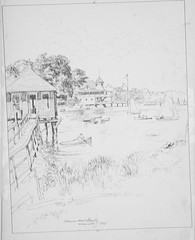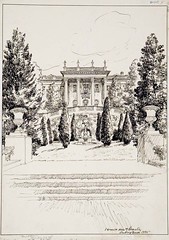Neo-Dadaism - The Concept
Neo-Dada is the term given to the mid 20th century, 1958 to be specific, art movement, including Fine Arts, literature, theatre, and graphic design, which was similar to the earlier Dada artworks. This genre challenged the concept of 'Aestheticism' associated with the traditional form of art and extended the boundaries of the category arts.
The History
In 1960, American art historian & critic Barbara Rose (born 1938) helped promote the term 'Neo-Dada.' The same year, another American art critic Irvin Sandler (born 1925) explained the term as "an avant-garde fad." Two years later, Neo dada was considered the most popular and talked about art movement. An alternate name 'Junk Culture' was also given by English art critic Lawrence Alloway (1926-90) to describe the artwork of the likes of American artists Robert Rauschenberg (1925-2008) and Claes Oldenburg (born 1929).
The Details
In the art mediums other than painting, like performance, dance, films, and Installation Art, Neo-Dadaists used their own bodies as the base. Even unsettling or threatening performances involving destruction, violence, and aggression did not deter them.
The Correlations
Neo-Dadaist works include the ones faring between Abstract Expressionism and Pop Art. The artworks themed on everyday life, visual philosophy, and/or spirituality, with a focus of depicting positivity and optimism in life. This inspiring art form came to people's notice towards the end of the Abstract Expressionist (origin 1950s) reign and dispersed as the other similar movements, such as Assemblage Art (origin 1950), Pop Art (origin late 1950s), Nouveau Realism (origin 1960), Happenings (origin 1957), Junk Art (origin 1960s), and Fluxus (origin 1960s), gained momentum. Neo-Dadaism formally ended in 1962.
The Artists
In 1958, the first bunch of artists were designated Neo-Dadaists. They were American artists Jasper Johns (born 1930), Robert Rauschenber, and Kaprow Allan (1927-2006). Marcel Duchamp (French - 1887-1968) and Kurt Schwitters (German - 1887-1948) are considered as the strong influences to the Neo-Dadaism. The versatile Robert Rauschenberg delivered exemplary artworks in right from painting to performance art to collage. He had challenged the modernist outlook of paintings, art, and sculpture as a spiritual journey and believed that there was no limit to creativity. He felt life was open to art. Owing to his revolutionary approach and disinterest in typical art style, formal art critics hated him.
Some other artists include Nam June Paik (Korean-American - 1932-2006), Joseph Beuys (German - 1921-86), Yoko Ono (Japanese-American - born 1933), Yves Klein (French - 1928-62), Jean Follett, Edward (American - 1927-94) and Nancy Reddin Kienholz (American - born 1943), and Jim Dine (American - born 1935).
Recently, the term Neo Dadaists was used to refer to an international group of art performers from Kroesos Foundation, led by Mark Divo. In 2002, they took over the origin point of Dadaism, Cabaret Voltaire in Zurich. They displayed their artworks there, until they were evicted on Mar 02, 2002.










